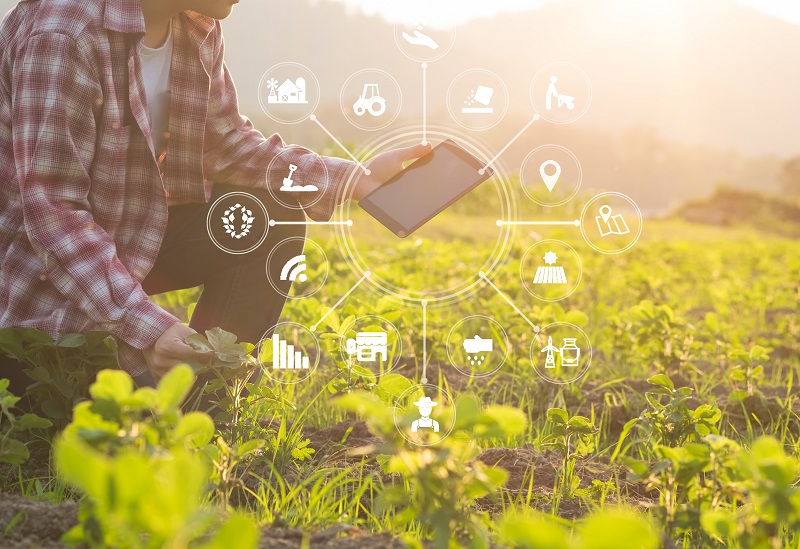5 Ways Farmers Can Monetize Their Data
There’s a new crop farmers can harvest, and it’s called data. Here are five ways farmers can monetize the information they are already aggregating and reap the benefits.
You’ve been farming your land for over a couple of decades, enjoying driving your big machines, and trying to figure out how to extract that extra couple bushels per acre. With the advent of digital farming apps, you may have also signed up believing in the promises made by large corporations that if you would provide your data these apps would help give you a better yield. But that promise just hasn’t come true. And, you may be wondering what did I give up my data and time for?
You worked hard to aggregate your farm field data and what you may not realize is that your data is actually a gold mine. Your farm layer cake, the actual components of your farm that make your yield: your N/P/K chemical layers, the way you planted, the way you sprayed, what your soil looks like, the harvest you produce, are all being used to develop new products, provide you with agronomic services, sell you additional digital apps, and much more. Why give that up for free? Here are five ways you can take control of and monetize your farm data:
1. Share Incentives — The Nice Way: Many landlords, corporations, and even governments will give you incentives in the form of carbon credits if you share your farming operations data yearly with them. If you can showcase that you’ve reduced your carbon footprint year over year with no-till activities, lower spraying, reduced water, or tiling, you can earn big money for these credits. Your first step is to go to Comet Farm and calculate your carbon emissions, and then just work backwards from there. If you are considering any of the above farming operation changes, or you just measure your soil temperature and rain gauge regularly, you can share that data and earn cash in the bank through the U.S. federal cap-and-trade program.
2. Data for R&D — Take Back Your Farm’s Data Value: Most start-ups and large corporations want access to your data, even if you aren’t a customer of their services. Platforms that allow you to upload your data seamlessly based on a field ID will pay you per transaction of your data. For example, if you have 30 fields and 10,000 acres, you potentially have 30 fields worth of planting, spraying, harvesting, soil, cover crop, and other agronomic data over each farming season. If you farm corn and soy for two decades, that’s about 20 years of untapped data; realistically, we are looking at the last five years of good, clean data from your machines. Each field, let’s say 30 x 5 years of data x ~5 layers of data is 750 records of data that can be sold by field ID to traders, insurance brokers, R&D commercial development, academics, and environmentalists via a fairly anonymous program. AND THE ONLY DIFFERENCE IS, this time you make money, as it’s already happening with the services you sign-up for. You can effectively take back the power by signing up, uploading, and selling your data on a reputable data marketplace. To be clear, we are not talking about an intermediary who you outsource to — but a data marketplace that will pay you per transaction — and enables you to stay in control of your data.
3. Experimentation Opportunities — Layer on the $$: Another way farmers can monetize their farm data is by sharing that data selectively with large and small corporations, academics, researchers, and the government in order to qualify for experimentation opportunities on acres of their land. This could be seed, chemical, soil samples, biologics, or even hardware testing experimentation. Many times it’s hard to find these opportunities, and it may come down to who you know. Large companies know they have the advantage and farmers are not in the business of creating a true marketplace that can extract the highest value for their experimentation opportunities. To conduct these clinical trials on your field, discover if you qualify for them, and to extract the highest value per acre, it makes sense to aggregate your farm data and uploaded and available for sale in a marketplace that allows you to get paid. This is one of the many ways you can add $$/acre to your season’s P&L.
4. Aggregated Data Selling — Neighborly Partners for More $$: Farmers are in many ways like doctors. It take years of experience to master the craft, and yet for some reason, farmers like doctors will compete against each other. While competition can be healthy, when it comes to aggregating your data with your fellow farmers, the recommendation is — just do it. But only do it, when all of you can win and earn extra dollars. Platforms like Monsanto, John Deere, and Climate Corp. are getting aggregated data for free at the cost of farmers. What if you could pool your data with other farmers and the large companies had to purchase it for their marketing, seed selling, equipment selling, finance selling ways to be able to better target you? There is an opportunity here to start making real money. Consider organizing a collective data pool with your nearby farmers so that that all of you can benefit financially. The data can be aggregated and positioned as power data pools for these corporations to buy. When it comes to aggregating the data, think of the trading platforms that will want to buy a particular data set.
5. Real Estate — Always Valuable: Whenever a farmer or landowner sells their property, companies look at tax and insurance filing history to gauge the value and production of that land. Make this data easier for them to access, but make them buy it. Publish your field/yield data good or bad, allow the market to buy that data, and make you some money, and then allow the market to dictate the price of your land. Chances are you aren’t selling farm land in this new inflationary environment, so it makes sense to make some money on your data reports in the meantime.
Appealing as it may be to just keep operating as usual, consider you could be earning anywhere from $15-25 dollars per acre by selling your data. By leveraging a data marketplace that allows you to easily upload your data, generate a contract, and that has buyers available to purchase your data you stand to create a new type of wealth for future generations. And remember, whenever anyone asks you to share your data, you can send them a link to your uploaded farm data for them to purchase with a credit card. It’s time to take control and earn for what you labored to own.











